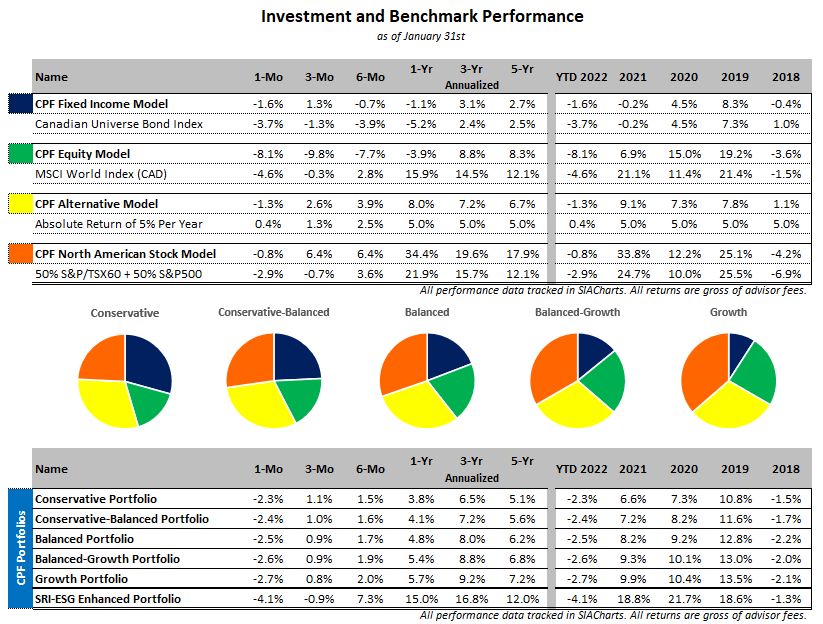January 2022
Year of Normalization
North American equity markets had one of their worst starts to the year on record, coming off all‐time highs from the prior month. Inflation readings for Canada and the U.S. spurred the start of the sell‐off, as the rate of price increases hit decade highs. The Consumer Price Index grew by 4.8% in Canada and 7% in the U.S. from a year ago. While volatile energy and food prices are included in these calculations, the readings are likely lower than the actual inflation rate experienced by consumers.
The rate of inflation is expected to normalize toward mid‐2022 if supply chain disruptions settle and energy production increases to meet heightened demand. The Bank of Canada and Federal Reserve both committed to maintaining their policy interest rates at current levels, although anticipations are rising for rate hikes from both central banks in March. The Federal Reserve has started to cut down on the amount of stimulus they’re putting into the economy by reducing bond purchases and allowing maturing bonds to roll off their balance sheets.
Another area of normalization is global growth. After an extremely rapid economic recovery, the International Monetary Fund forecasts global growth to moderate to 4.4% in 2022, down from 5.9% in 2021. Two regions that have had their growth outlooks revised are the U.S. and China. President Biden’s Build Back Better package has been removed from baseline forecasts, while ongoing pandemic‐related disruptions have been factored into China’s outlook.
One widely used valuation metric for equities is the Price/Earnings (P/E) Multiple. In 2020, the market experienced a swift expansion in P/E as investors anticipated higher corporate earnings in the future. As earnings grew in 2021 to meet these expectations, the P/E Multiple contracted. We expect this valuation metric to continue normalizing throughout 2022 as Earnings Per Share grow with higher margins and share buybacks.
While the year is off to a shaky start, it’s important to remember that these types of pullbacks are healthy and a normal part of investing. We’ve been fortunate to have an extended period of relatively calm markets, excluding the reaction at the start of the pandemic. While short-term volatility may be uncomfortable to see, it’s a regular occurrence when investing with a longer time horizon. When put into context, your investment returns are the premium you’re collecting for taking on the risk of investing in financial markets and will typically far exceed your returns in a savings account.
Portfolio Contributors
- Growth in energy prices due to inflation and the Ukraine‐Russia conflict led to Enbridge shares gaining 8.76%.
- Toronto Dominion added 5.91% on forecasts that the bank will be able to lend at higher rates in the future.
Portfolio Detractors
- The high‐beta investments in ARK Innovation ETF contributed to a loss of 19.98%.
- Higher anticipated interest rates caused shares of Iron Mountain REIT to sell off 11.80%.
All returns are for the reported month and in local‐currency.
All data sourced from SIACharts and FACTSET.


